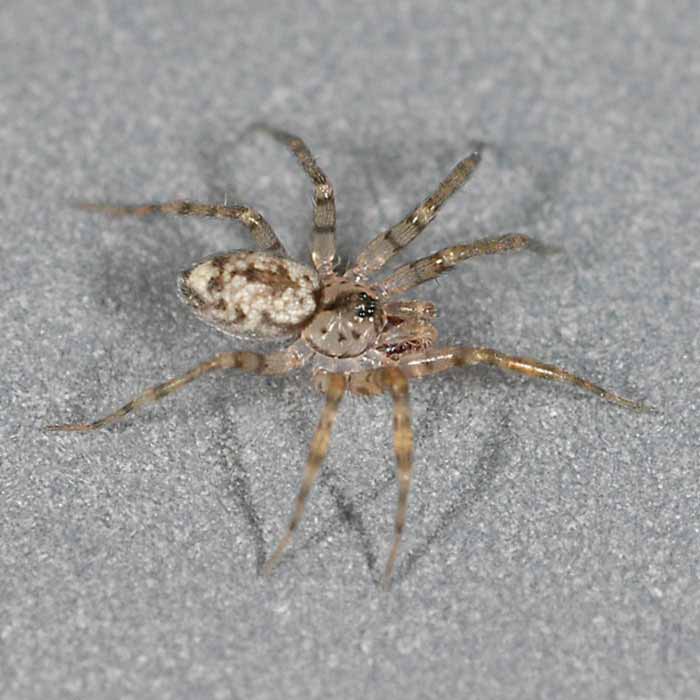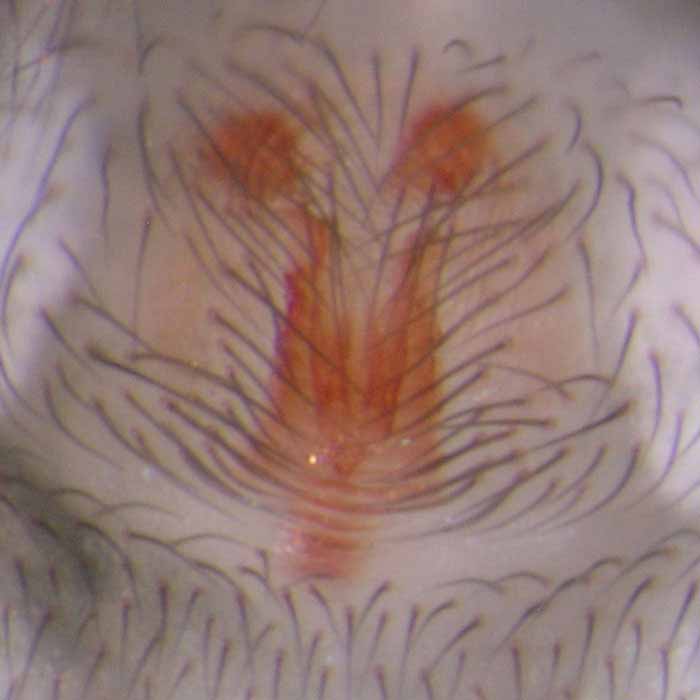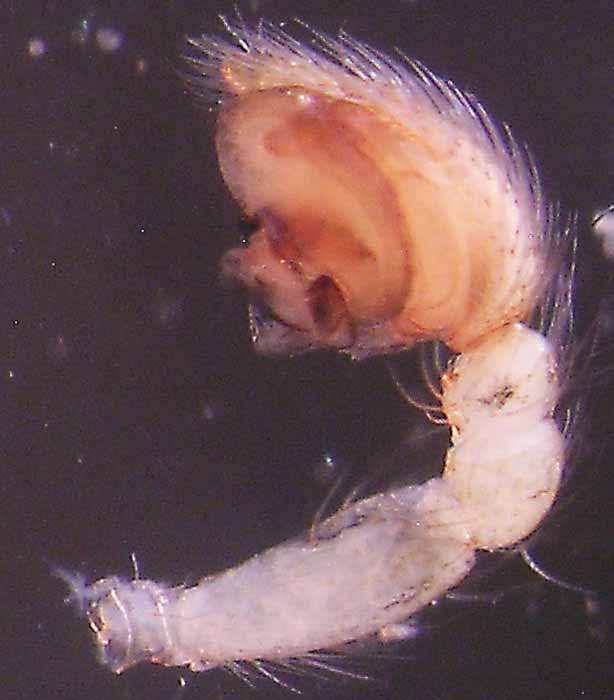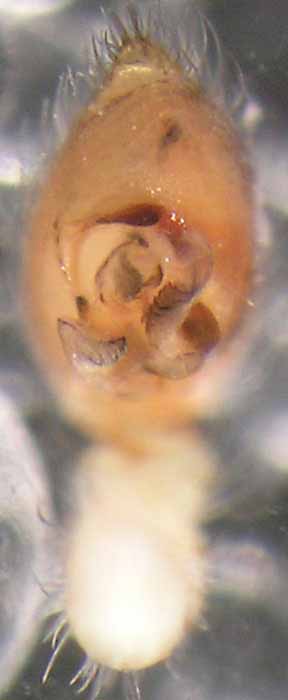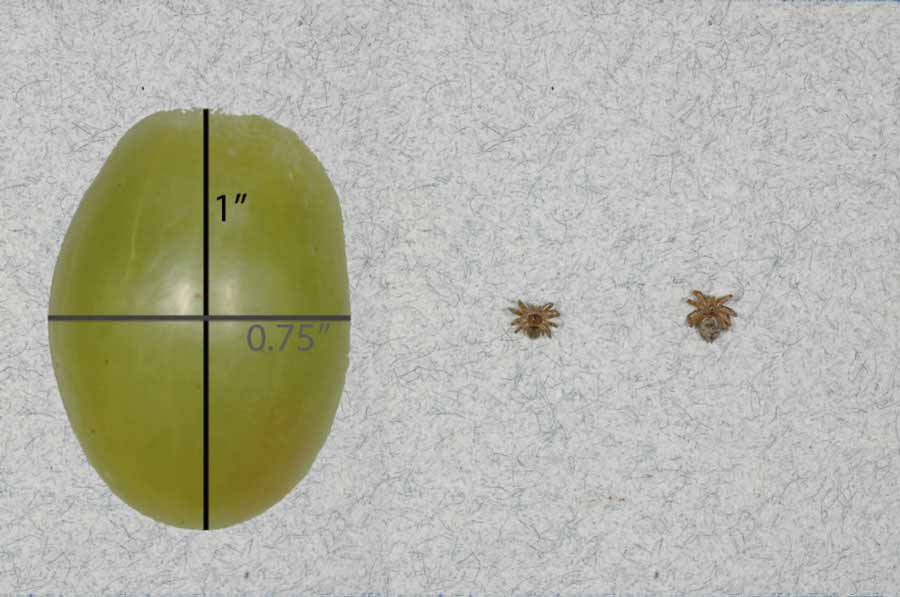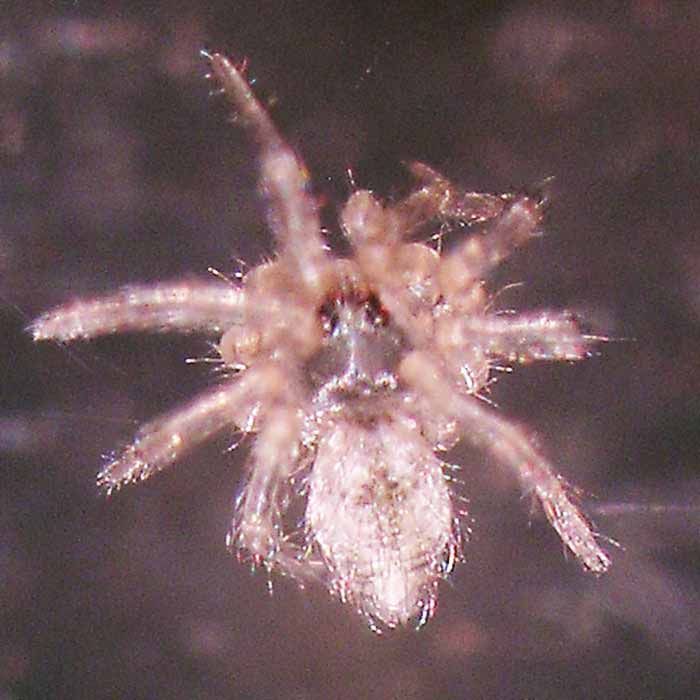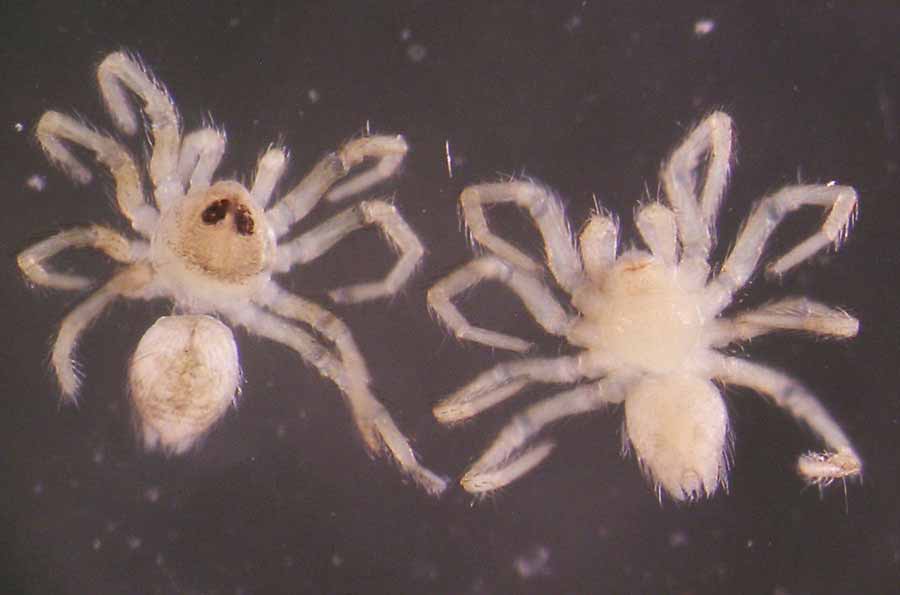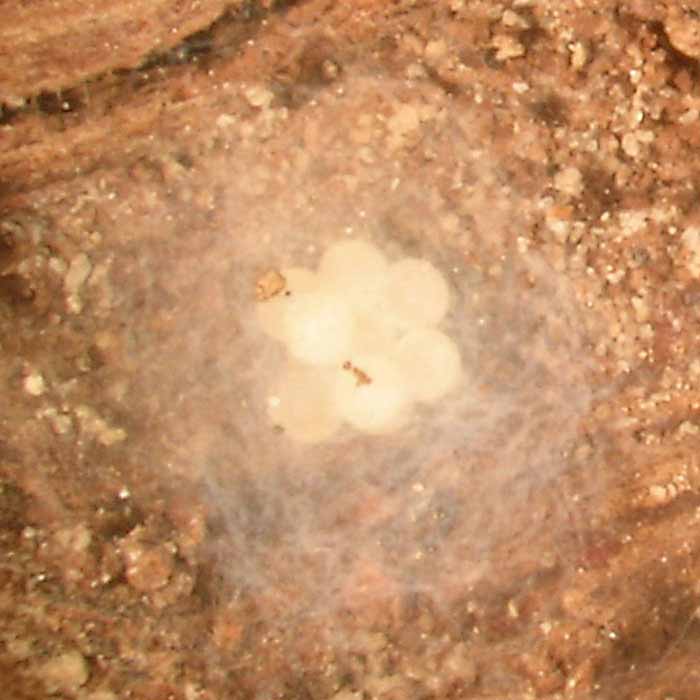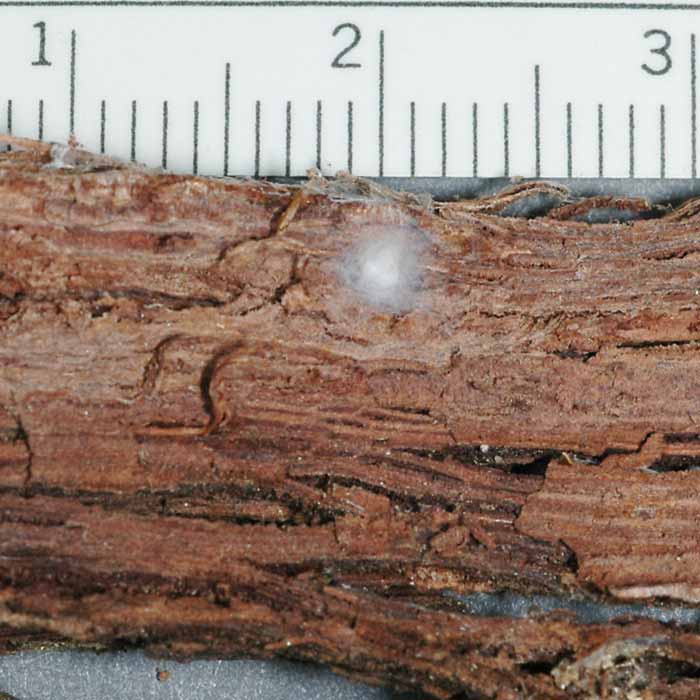Oecobius navus
|
adult female, live (note characteristic body form) |
|
adult male, live (note characteristic body form) |
|
female genitalia; epigynum |
|
male genitalia; palp, lateral view |
|
male genitalia; palp, ventral view |
|
grape size comparison with adult spiders; male (left), female (right) |
|
spiderling, live |
|
spiderlings, dead; dorsal (left), ventral (right) |
|
egg sac |
|
egg sac with scale (cm) |
Current valid name
Oecobius navus Blackwall (family Oecobiidae)
Recognition and diagnostic features
Very small spider, holds its legs close to its body in a characteristic manner (see photos), and runs at a very fast pace with a convoluted path.
Related or similar species
Dictyna calcarata
Spider
Body lengths when mature: male: 2.58 mm, female: 2.91 mm
Immatures resemble miniature adults.
Egg sac
Description: small circular sac, clutch of few eggs in middle covered very sparsely by a few strands of silk, usually laid in the hollow of a branch or depression
Number of eggs per sac: 10.6 ± 2.18
Size of egg: 0.55 ± 0.023 mm
Time of year eggs are likely to be laid: April to September
Distribution
In California: ubiquitous
Elsewhere: cosmopolitan worldwide including Australia and New Zealand
Not native to North America
This species has been transported and become established outside of its range.
Biology
Makes small webs. Movement is rather fast and in a very convoluted pathway. Often feed on ants. If it runs into an ant, the spider switches from convoluted running to running tight circles around their prey, tying it down with silk as it encircles it. Very dominant non-native spider in agroecosystem leaf litter.
Status in table grapes
Level of Incidence: common
Level of Concern in New Zealand: WPNZ (May 2010) nr, BORIC (Dec 2011) nr, MAF-BPRA (2002) nr (coding definition)
Level of Concern in Australia: WPAU (2006) nr (coding definition)
Level of Medical importance: none
Common name
None for species, flatmesh weavers for family
Taxonomic history
Until recently, it was known from many countries as Oecobius annulipes.
Commonly encountered synonyms
Oecobius annulipes
Selected references
Miyashita, K. 1992. Life cycle of Oecobius annulipes Lucas (Araneae: Oecobiidae) under indoor conditions and the effect of photoperiod on nymphal development. Acta Arachnol. 41: 5-10.
Shear, W. A. 1970. The spider family Oecobiidae in North America, Mexico, and the West Indies. Bull. Mus. Comp. Zool. 140: 129-164.


